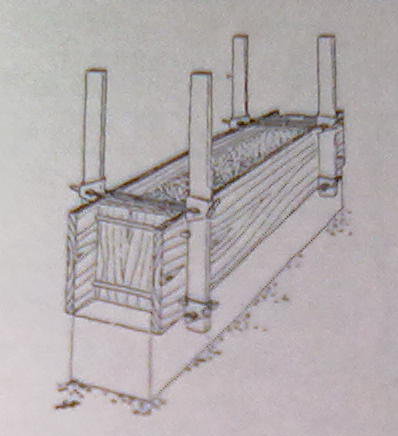
Rammed Earth Buildings Germany 
The most widepsread and common clay building style is rammed earth and sometimes called ‚pise’ in the Mediterranean. This style of clay building has been in existence in Latin America and known since at least 4000 years in China. For example, the "Chinese Wall" was originally built entirely from rammed earth. Germany’s tallest rammed earth building has 6 levels and situated in Weilburg.
Rammed earth is contructed by inserting moist and crumbly clay in a large mould, not more than 10-15cm thick layers, which are then compacted by stamping on the clay. The mould is sitting horitzonally and the moulds are removed to release the rammed earth wall.
The manual technique of stamping on the clay and the tools used require a lot of time and physical effort. Today this can be reduced significantly by use of electrical tools.
After removing the mould, the firmness of the rammed earth is very hard. You can easily insert nails without using an electric drill. The clay is still flexible enough to make some small touch ups with a knife for example. If the clay wall is dry, you will need to use an anchor to support the nails and screws. The rammed earth wall is dry in summer if the weather is hot (little to no humidity) and after a period of 3 weeks.
You don’t need plaster on rammed earth walls to get a smooth surface. After the mould is removed, it is simply enough to use a wet board smooth the surface.
When the Rammed earth wall begins to dry there are usually no flaws. The advantage over other clay walls is that there is less shrinkage and that it is not a smal brick but a large wall (monolithic). Also, it is firmer and reacting less to erosion. The benefit is that the wall is long lasting and has a high fire resistance but has a weakeness to high pressured water (firehose).
The disadvantage is that rammed earth is quite heavy and therefore less mobile.

